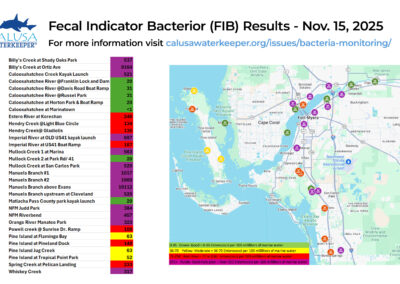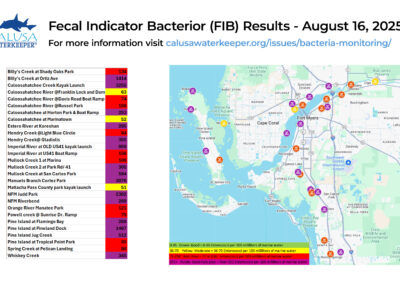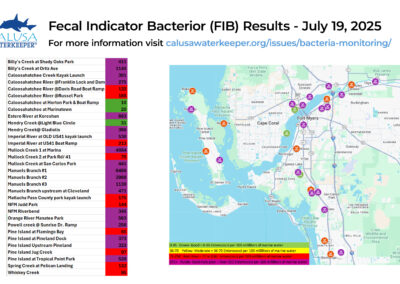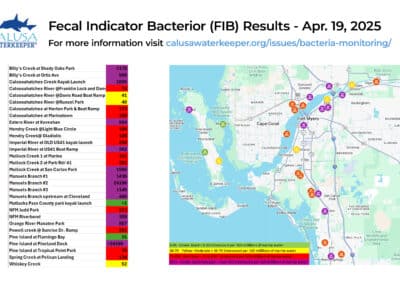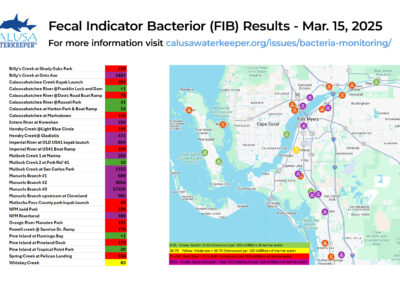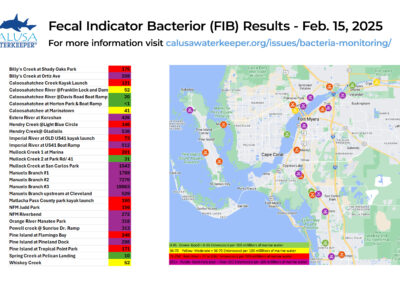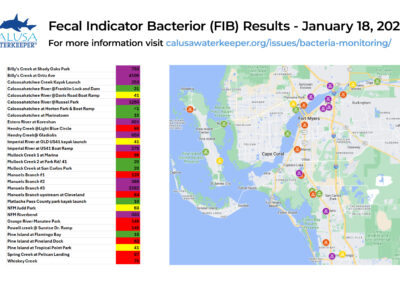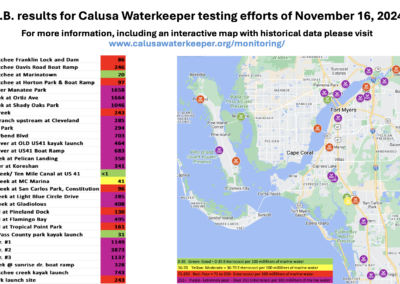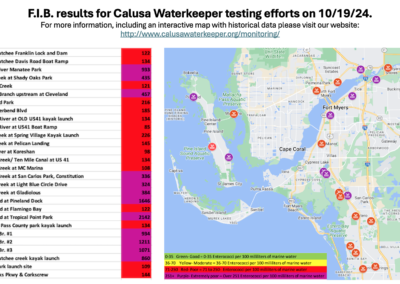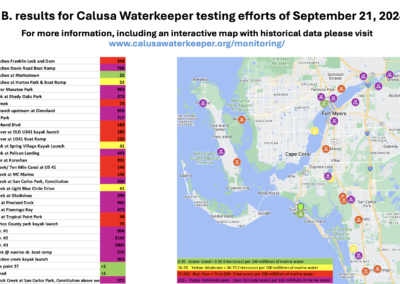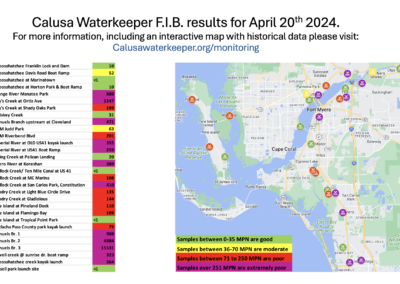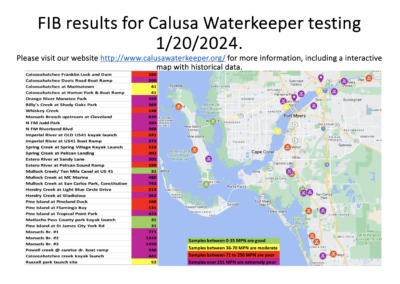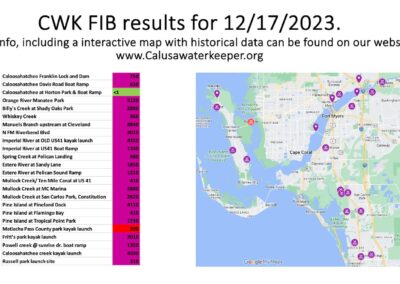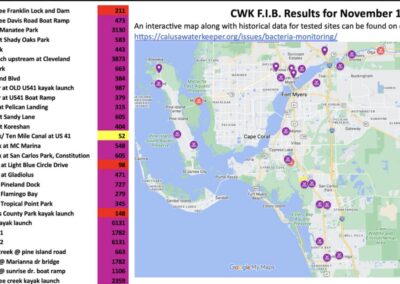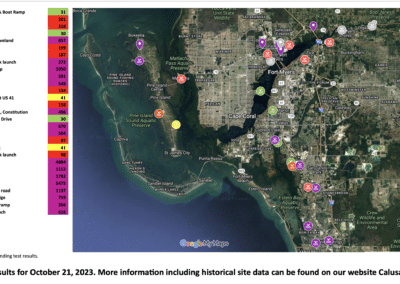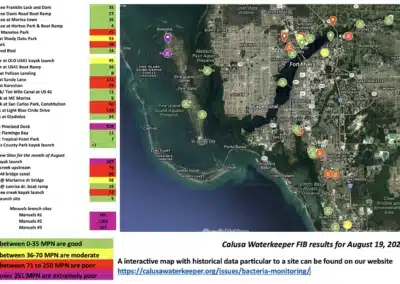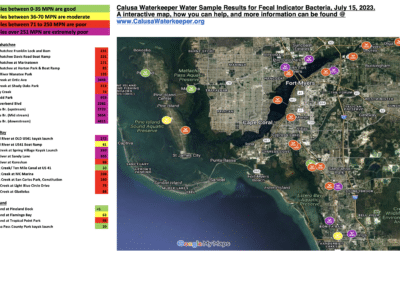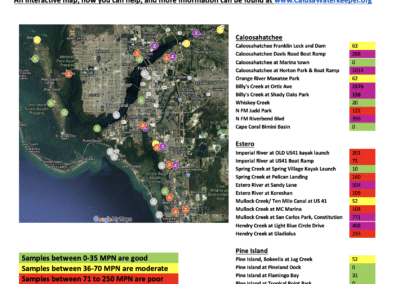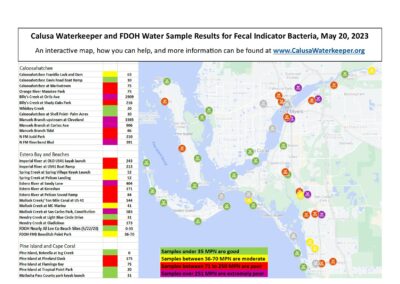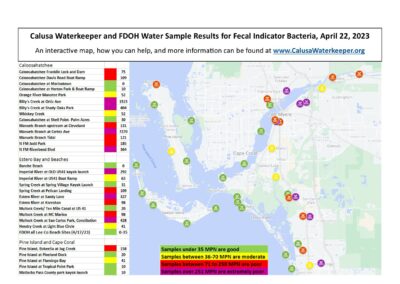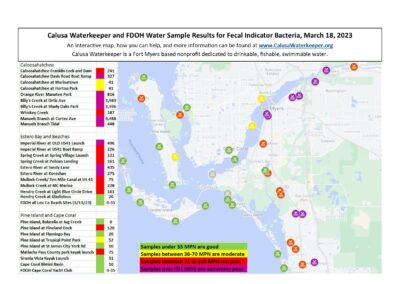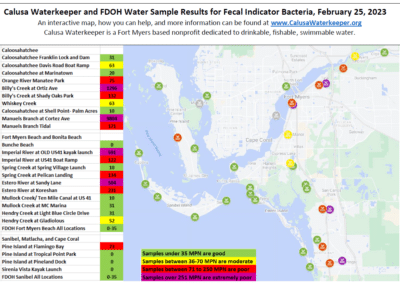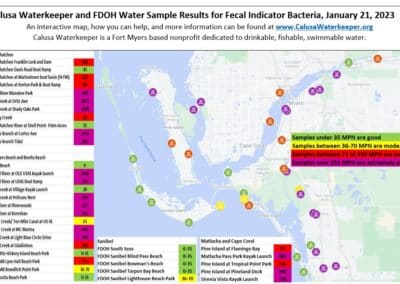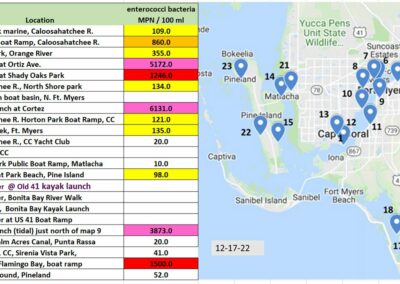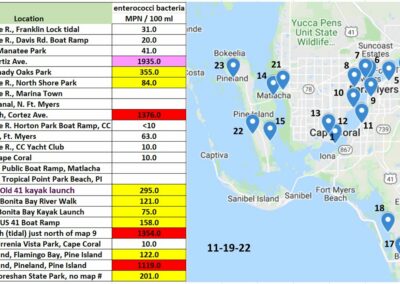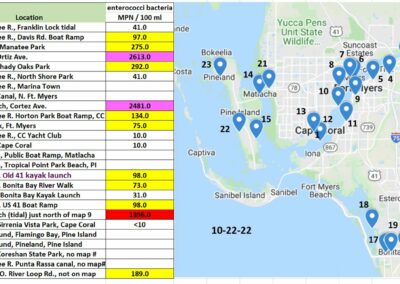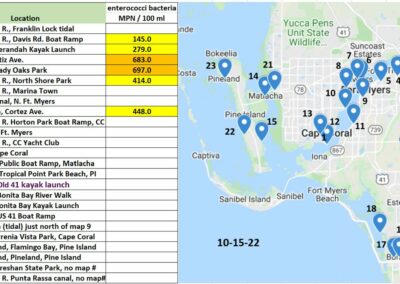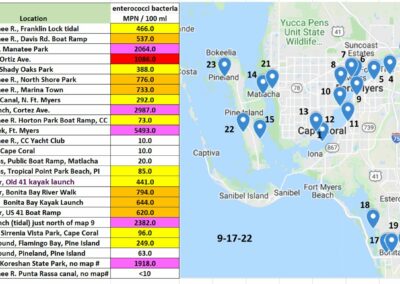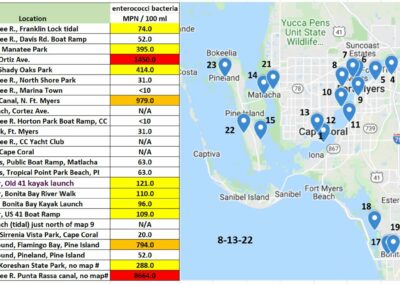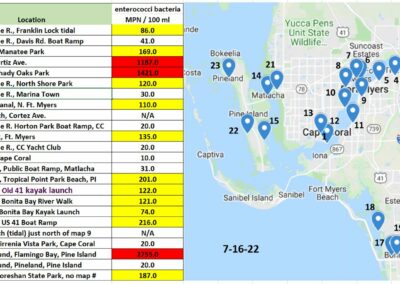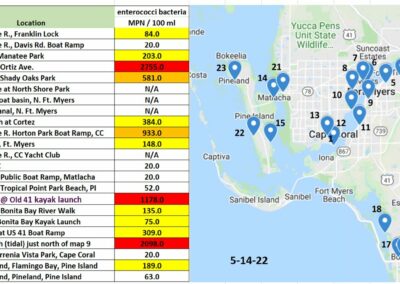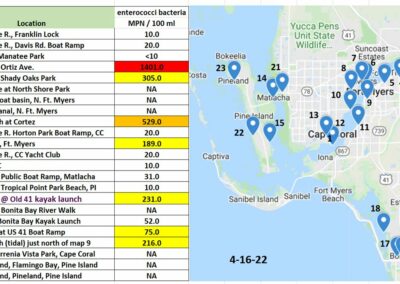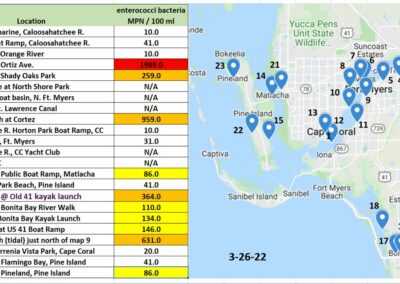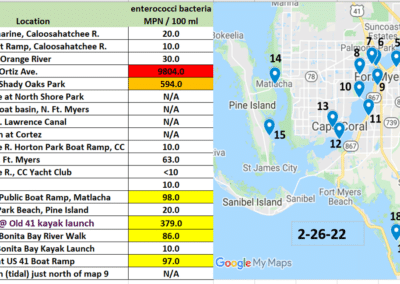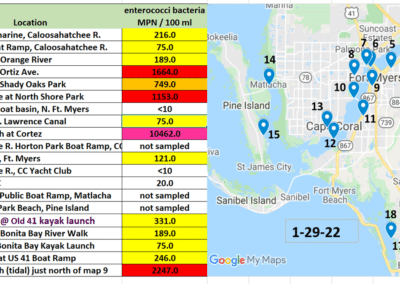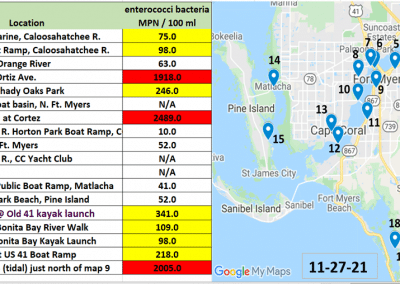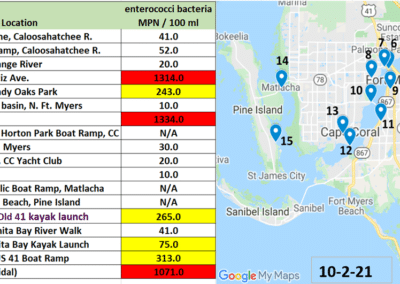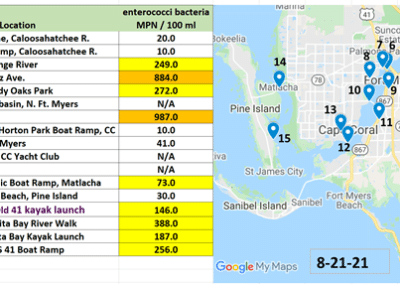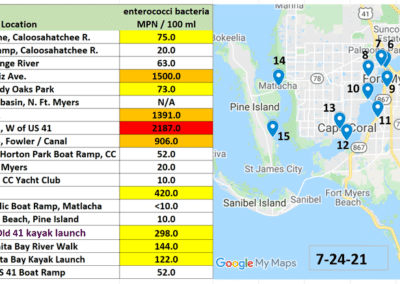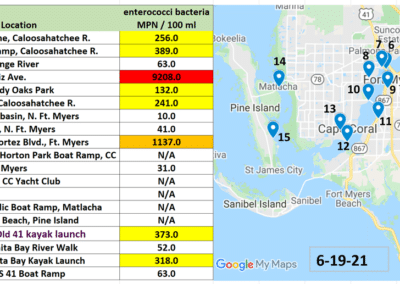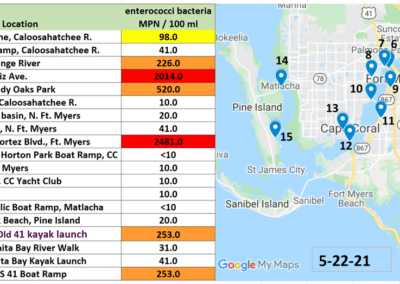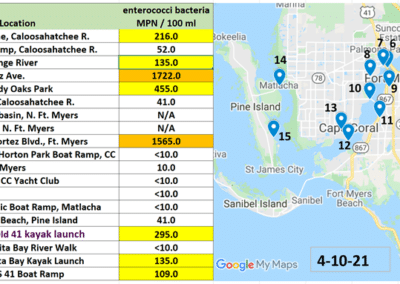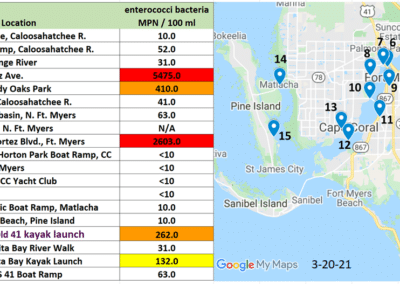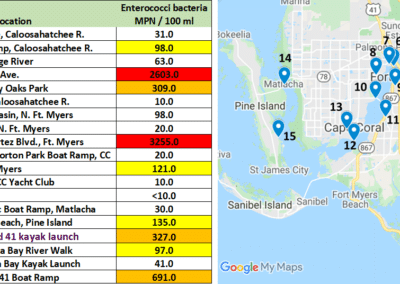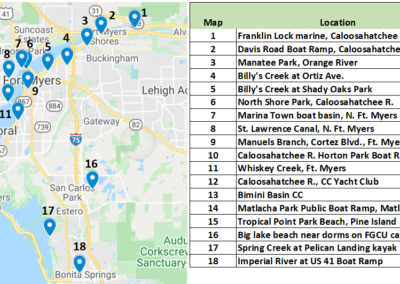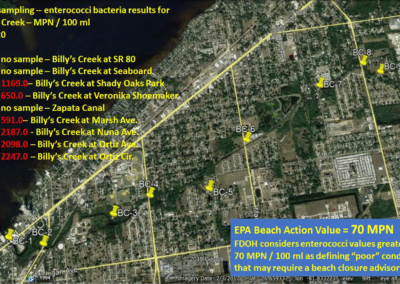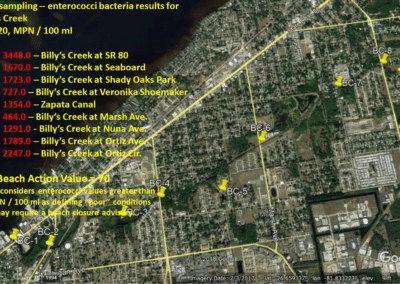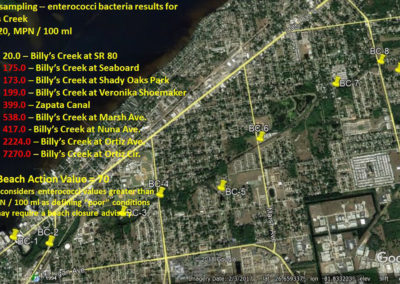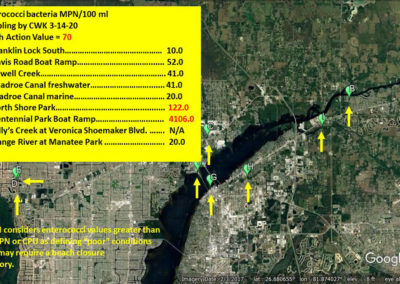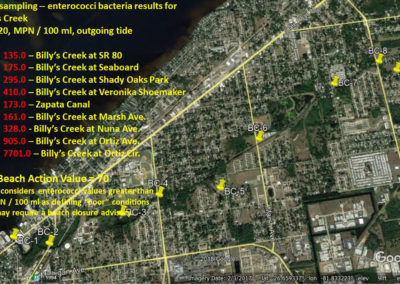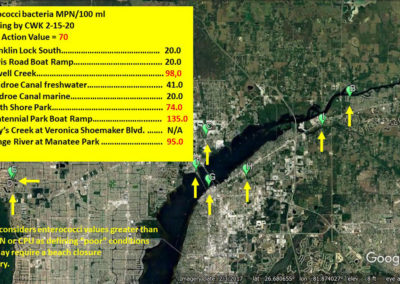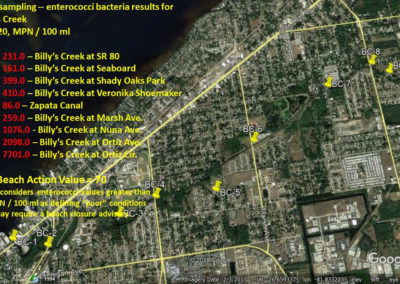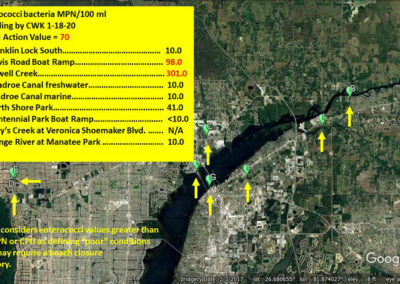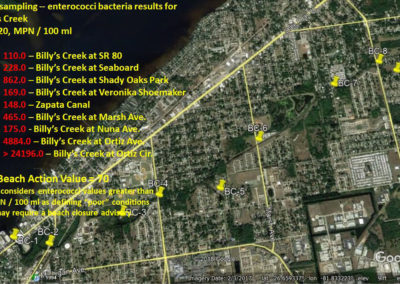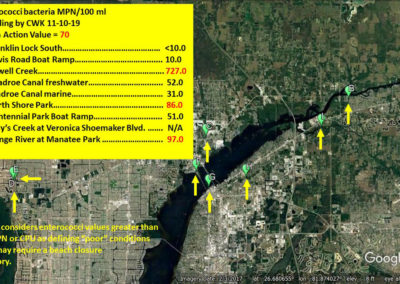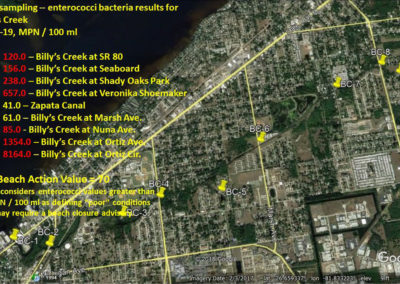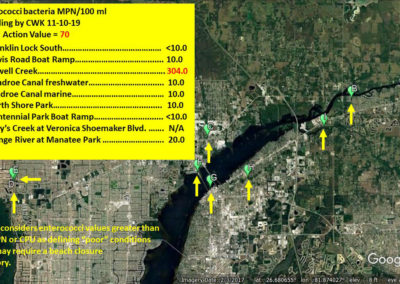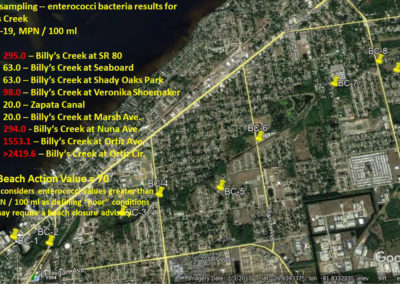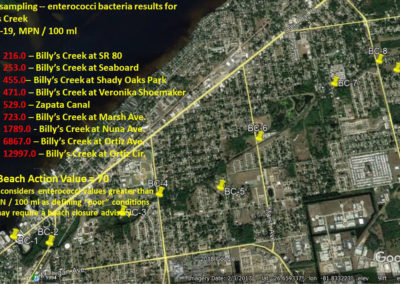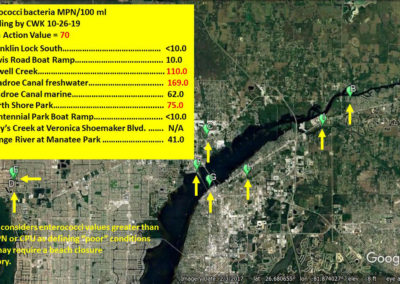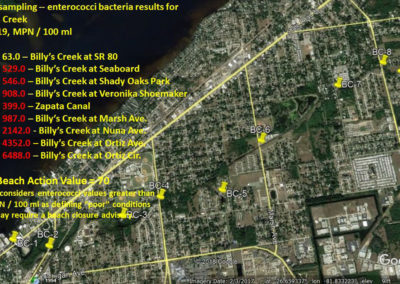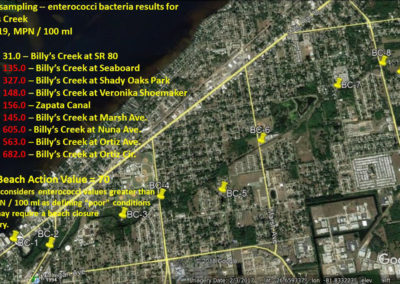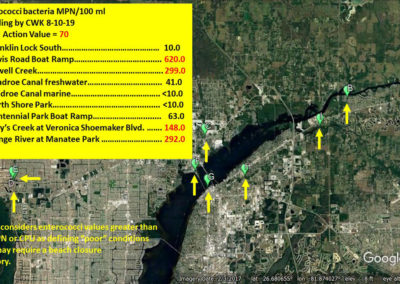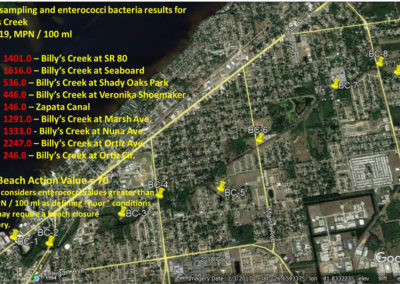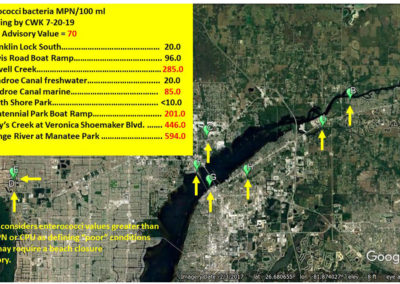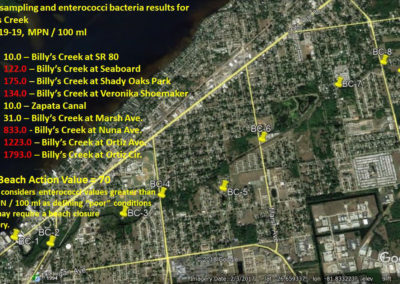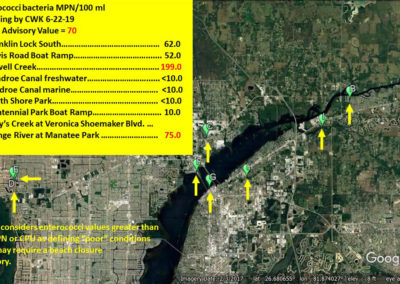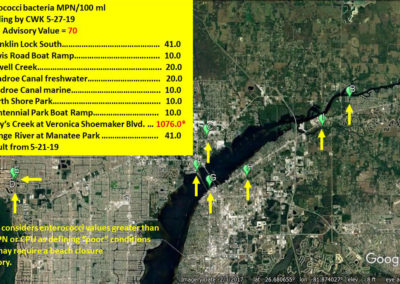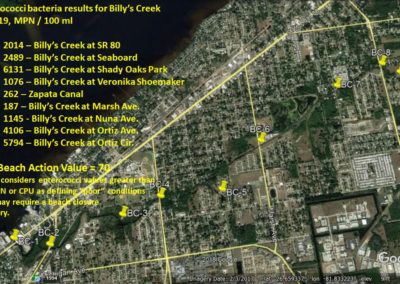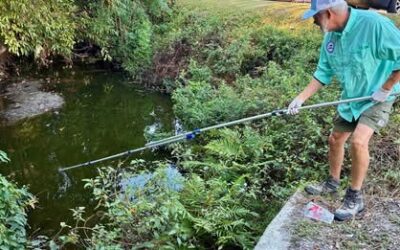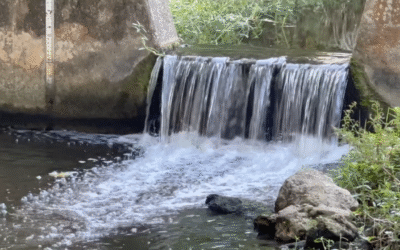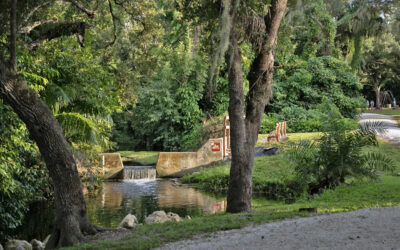Issue:
Bacteria Monitoring
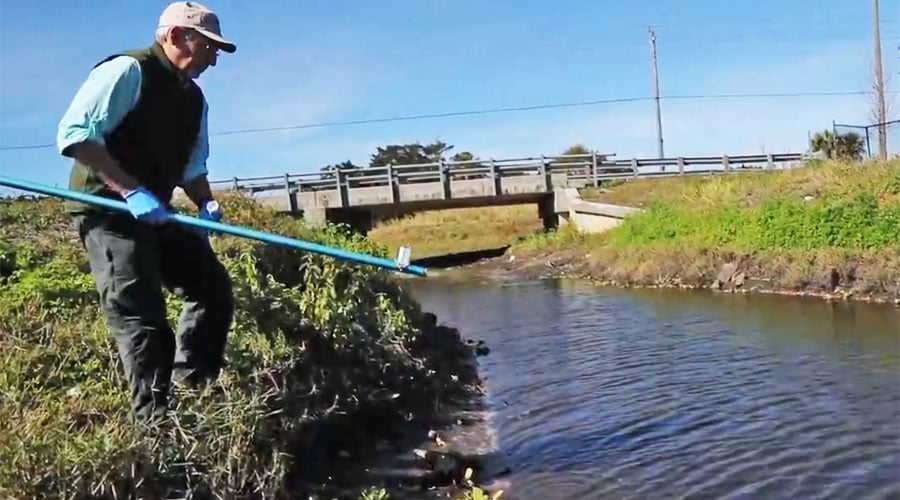
Fecal Indicator Bacteria (FIB)
Bacteria contamination plaguing Florida waterways has arguably reached a crisis point. For example, Billy’s Creek and Manuel’s Branch, tributaries flowing into the Caloosahatchee near downtown Fort Myers, have long been a hot spot for Enterococci bacteria. Enterococcus is used as an indicator of fecal contamination which can carry disease-spreading bacteria, viruses and parasites.
Independent testing of several Lee County waterways is routinely performed by Calusa Waterkeeper staff and volunteer rangers. Test results are determined in our independent lab and at Florida Gulf Coast University (FGCU) depending on the number of samples. Calusa Waterkeeper’s close watch of local creeks has compelled more monitoring by the Florida Department of Environmental Protection.
Enterococci bacteria can cause gastrointestinal illness, infections and rashes. Fecal indicator bacteria tests high in several Southwest Florida creeks both in the wet and dry season, but is commonly driven by stormwater runoff which carries bacteria into area waterways.
Updates & Action
Fecal Indicator Bacteria (FIB) Sampling
The data in this interactive map includes the latest Calusa Waterkeeper test sites. Click on a site to get more information and note the last date of sampling.
- It should be noted that we are not measuring or observing fecal matter in the water. These tests measure for fecal indicator bacteria, specifically enterococci.
- Bacteria sampling results show occurrences of serious contamination, especially in the upper reaches of Lee County tributaries.
- Contamination values have routinely been found at many times the EPA Beach Action Value of 70 MPN.
- Even with these high levels of contamination, few if any warning signs are typically posted.
- Both Lee County and city officials are aware of this issue.
FIB Sampling Archives
(click images to enlarge view)
Related News Stories
Fecal Indicator Bacteria
Group eager to help city with polluted creek, but can it be saved?
Manuel’s Branch’s fecal bacteria levels regularly test far above state safety standards according to both government data and independent testing. The problem is not new.
Calusa Waterkeepers push city to act after finding fecal contamination in creek
Calusa Waterkeeper is calling on the city of Fort Myers to take immediate action after their independent testing revealed persistent human fecal contamination in Manuel’s Branch, a popular recreational waterway that flows through downtown Fort Myers.
Calusa Waterkeeper Finds Evidence of Human Fecal Contamination in Manuel’s Branch After Two-Year Investigation
A two-year investigation by local environmental group Calusa Waterkeeper has found evidence of human-source fecal contamination in Manuel’s Branch, a small urban creek located just south of Lee Memorial Hospital in Fort Myers.
Calusa Waterkeeper Publishes Human Source Tracking Investigation of Fecal Bacteria Pollution in Fort Myers Waterbody
Calusa Waterkeeper volunteers and staff have collected evidence of persistent human sources of fecal contamination to Manuel’s Branch. The group will be presenting to the City of Fort Myers Environmental Advisory Board on December 2nd, 2025.
Is it safe to go in the water at Fort Myers Beach? Tests had shown poor water quality
Florida determines beach water quality based on Enterococcus levels. A measurement of 70.5 or more cells per milliliter of water is classified as “poor” and may trigger a public health advisory. The Sept. 17 sample showed greater than 2,010 Enterococci per milliliter, a level Calusa Waterkeeper emeritus John Cassani called “very high.”
Fort Myers Beach fecal bacteria: Don’t go in the water at Bowditch Point, officials say
Stay out of the water at Fort Myers Beach’s Bowditch Point Park, warns Lee County’s health department: There’s too much fecal bacteria – more than 28 times the safety threshold – and it might make you sick.
Make a Donation
Get Notified
Priority Issues
Harmful Algal Blooms
Cyanobacteria & Red Tide
Cyanobacteria (blue-green algae) and Karenia brevis (red tide) have been making major impacts on Southwest Florida.
Lake Okeechobee Discharges
Revise System Operating Manual
The Caloosahatchee River often suffers from too much freshwater in the wet season, and not enough freshwater in the dry season.
Cape Coral Spreader Canals
Nutrient & Sediment Loading
The City of Cape Coral is working to remove large storm-water barriers to make recreational boating more convenient.
Bacteria Monitoring
Fecal Bacteria
Calusa Waterkeeper has been at the forefront of monitoring this Fort Myers tributary for fecal bacteria indicators.


























